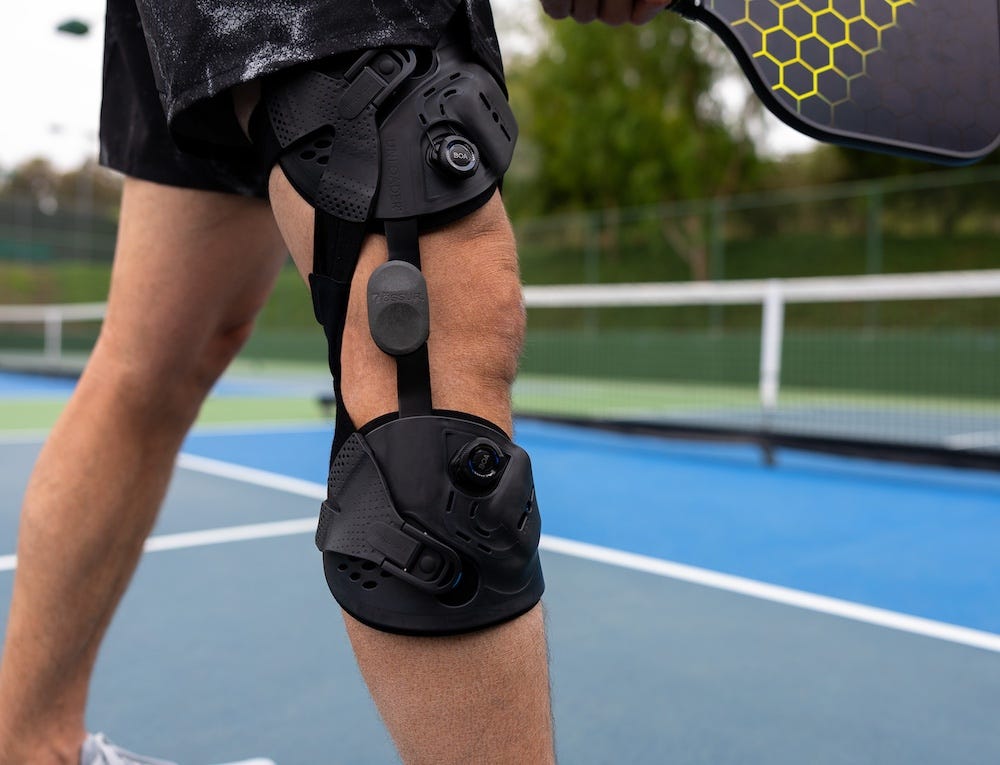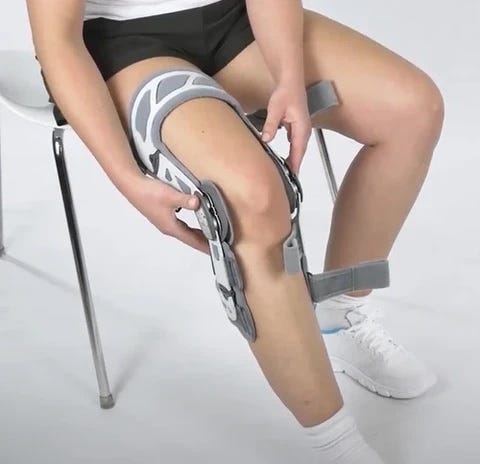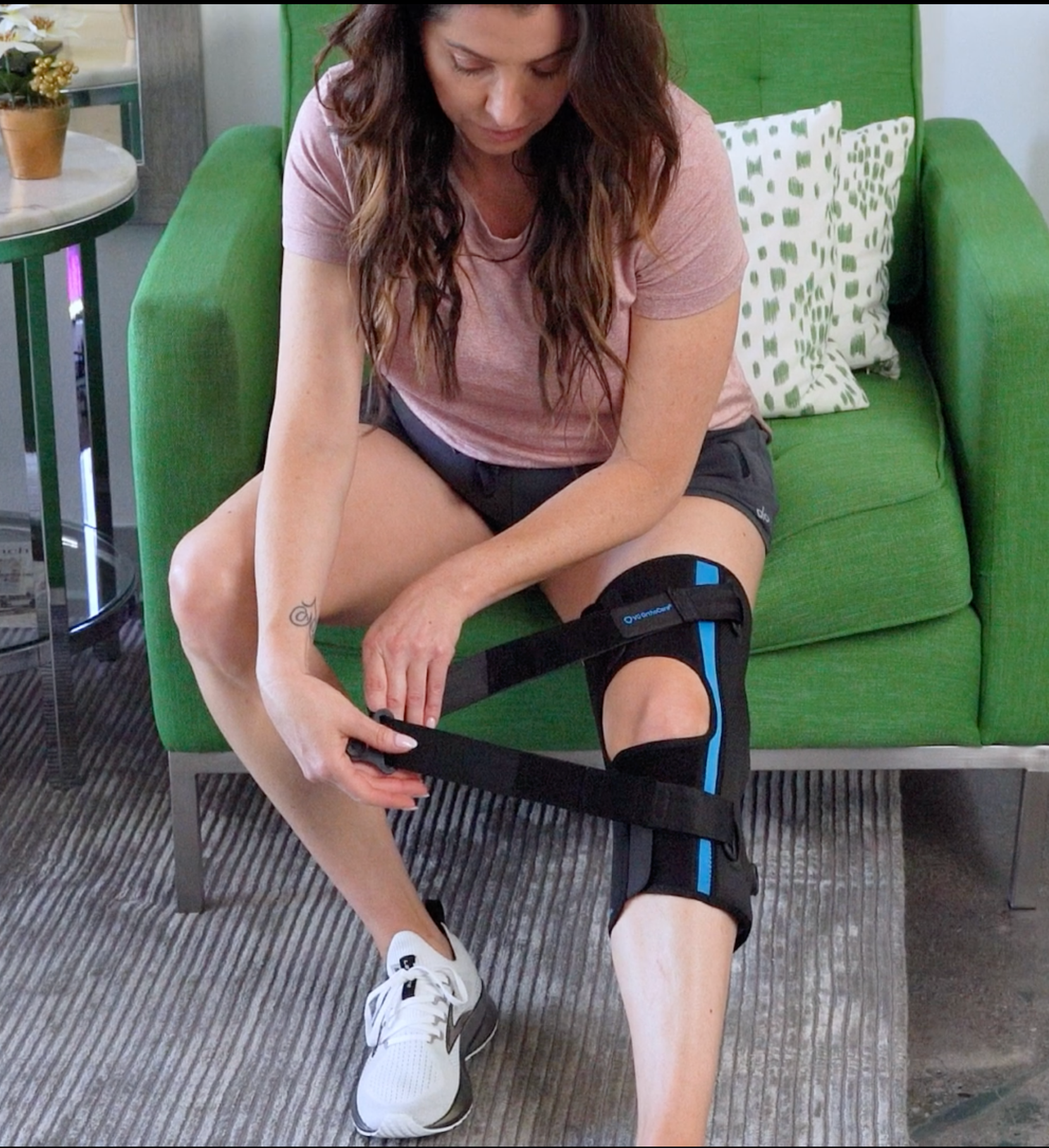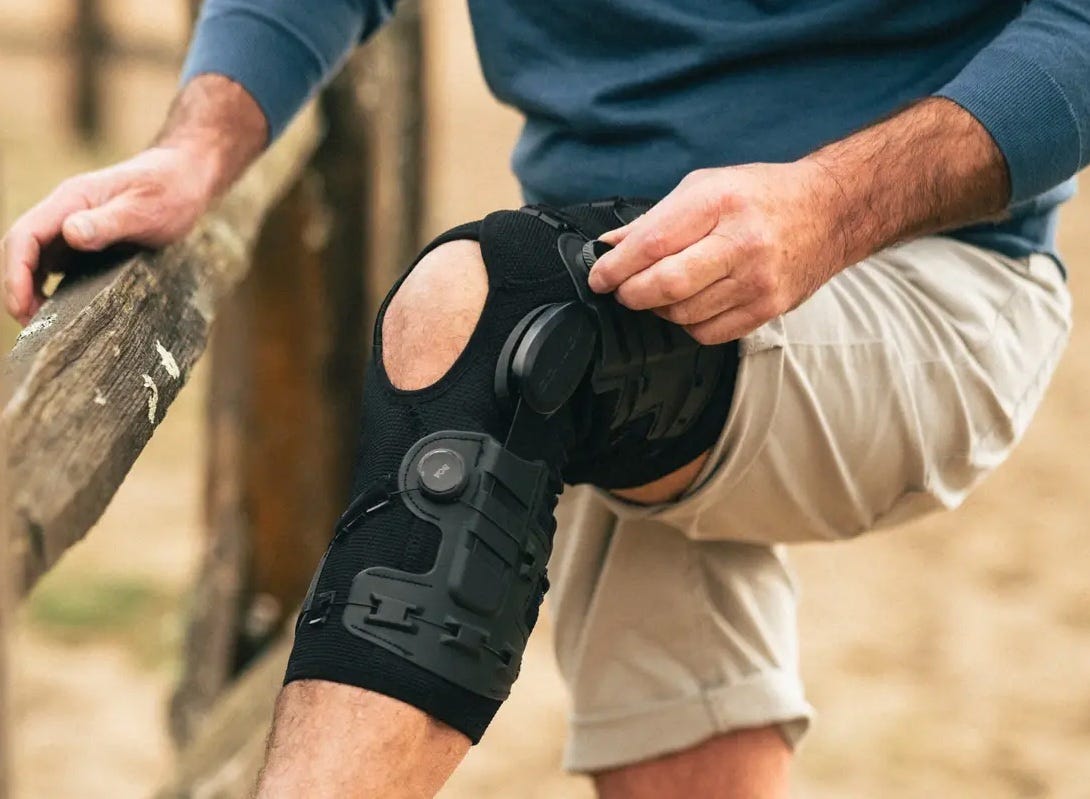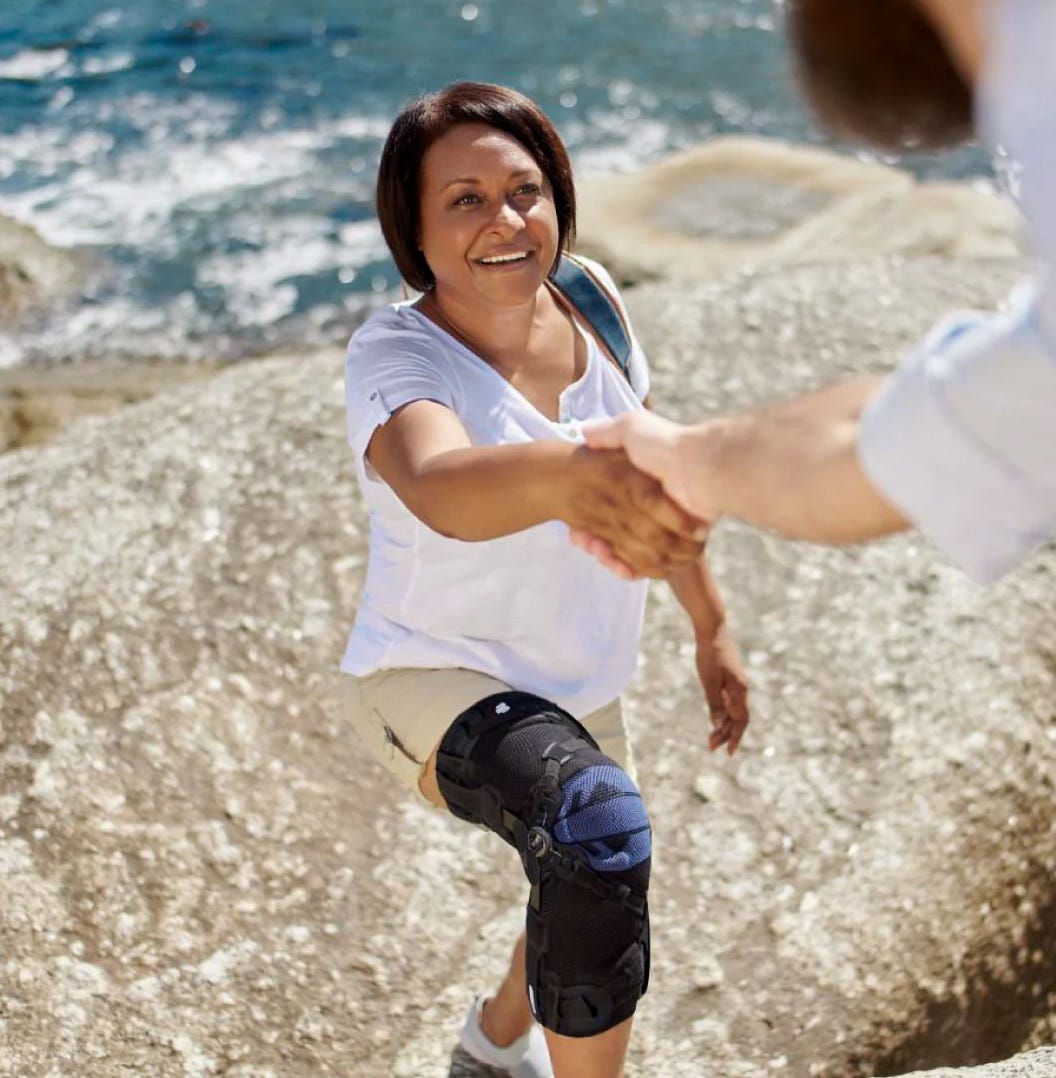What's in this post
Click to jump to section
Knee pain can be a significant hurdle in daily life, particularly for those dealing with osteoarthritis or other knee joint issues. An unloader knee brace is a specialized device designed to alleviate this pain and improve mobility. But what exactly is it, and how does it work?
An unloader knee brace, also known as an offloading brace, is specifically designed to reduce the weight and stress on the knee joint. It works by shifting the load away from the affected area. This redistribution of weight helps to alleviate pain, allowing individuals to move more freely and comfortably.
The brace is often recommended for people with moderate to severe osteoarthritis, where one side of the knee is more affected than the other. By reducing the load on the damaged area, the brace can slow down the progression of arthritis and delay the need for surgery.
Unloader knee braces are typically made from lightweight materials and are adjustable for a custom fit. This ensures that the brace provides optimal support without being overly restrictive, allowing for a range of motion that is essential for daily activities.
In addition to pain relief, wearing an unloader knee brace can enhance stability and confidence in movement, making it easier to engage in physical activities that were previously too painful or difficult.
Types of unloading
Unloader knee braces come in different types, each designed to address specific needs based on the severity of the condition and the area of the knee that requires support. Here’s an overview of the main types of unloader knee braces:
1. Medial Unloader Knee Braces
Medial unloader knee braces are designed to relieve pressure on the inner (medial) part of the knee. These braces are commonly used for individuals with medial compartment osteoarthritis, where the cartilage on the inside of the knee is worn down, causing pain and discomfort. The brace applies a gentle force to shift the load to the outer (lateral) side of the knee, reducing strain on the affected area.
2. Lateral Unloader Knee Braces
Lateral unloader knee braces work in the opposite way to medial braces. They are used to offload pressure from the outer (lateral) part of the knee. This type of brace is ideal for people with lateral compartment osteoarthritis or injuries affecting the outer side of the knee joint. By shifting the load to the medial side, these braces help alleviate pain and improve function.
3. Patellofemoral Compartment
The patellofemoral compartment involves the area between the kneecap (patella) and the thigh bone (femur). Issues in this compartment, such as patellofemoral pain syndrome (runner’s knee) or chondromalacia patellae (cartilage softening), can cause significant discomfort. Some unloader knee braces are designed to reduce pressure on the patellofemoral compartment by supporting and stabilizing the patella, which helps to alleviate pain and improve knee function.
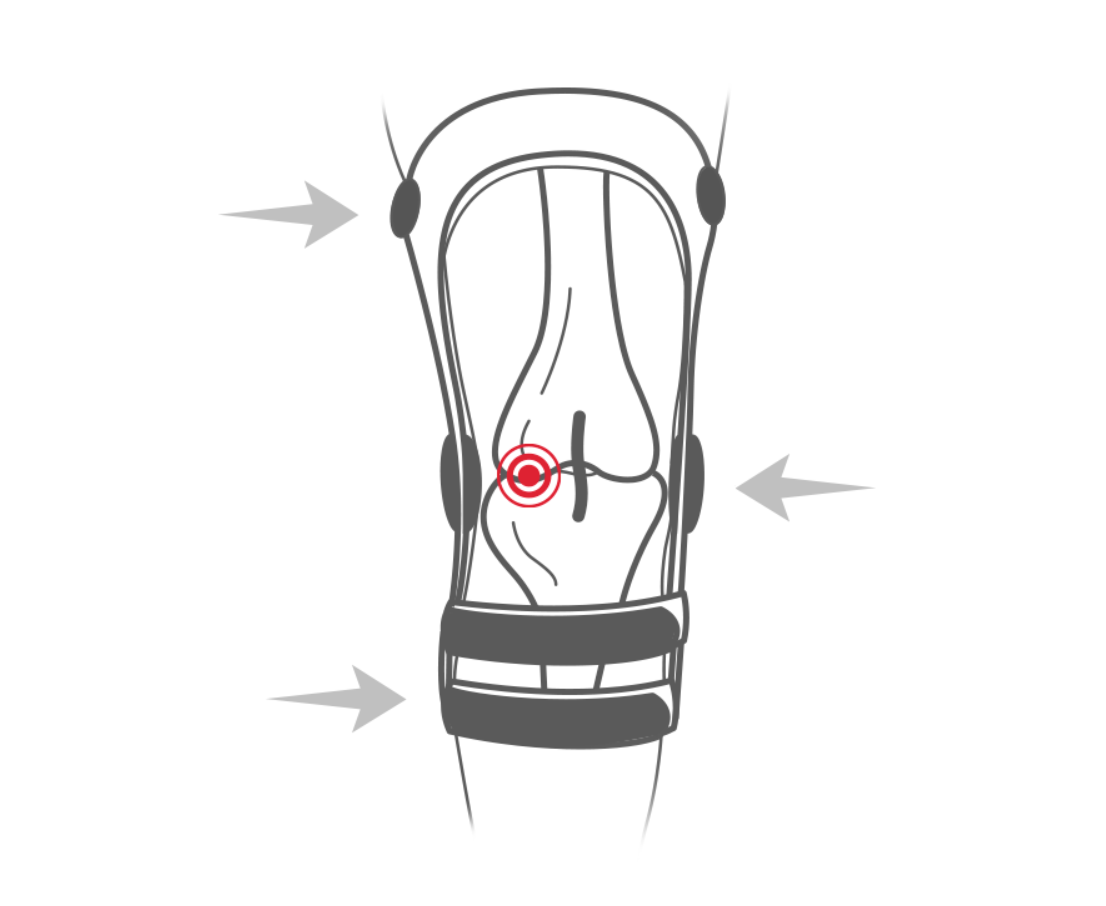

Unloader knee braces mechanically shift weight away from the damaged part of the knee. They can 'off-load' either the medial (inside) or lateral (outside) compartment and often incorporate load adjustment mechanisms that allow patients to fine tune their brace to meet their daily needs.
Unloading for Osteoarthritis
Unloading for osteoarthritis (OA) using knee braces is a well-established method to help manage pain and improve mobility, particularly for those with knee osteoarthritis that affects one side of the joint more than the other. Here’s how unloader knee braces are used to manage osteoarthritis:
1. Targeting the Affected Compartment
Osteoarthritis commonly affects the knee’s medial (inner) or lateral (outer) compartment. This is known as compartmental or uni-compartmental osteoarthritis. An unloader knee brace can help by shifting the load away from the affected compartment to the healthier side of the knee, thus reducing pain.
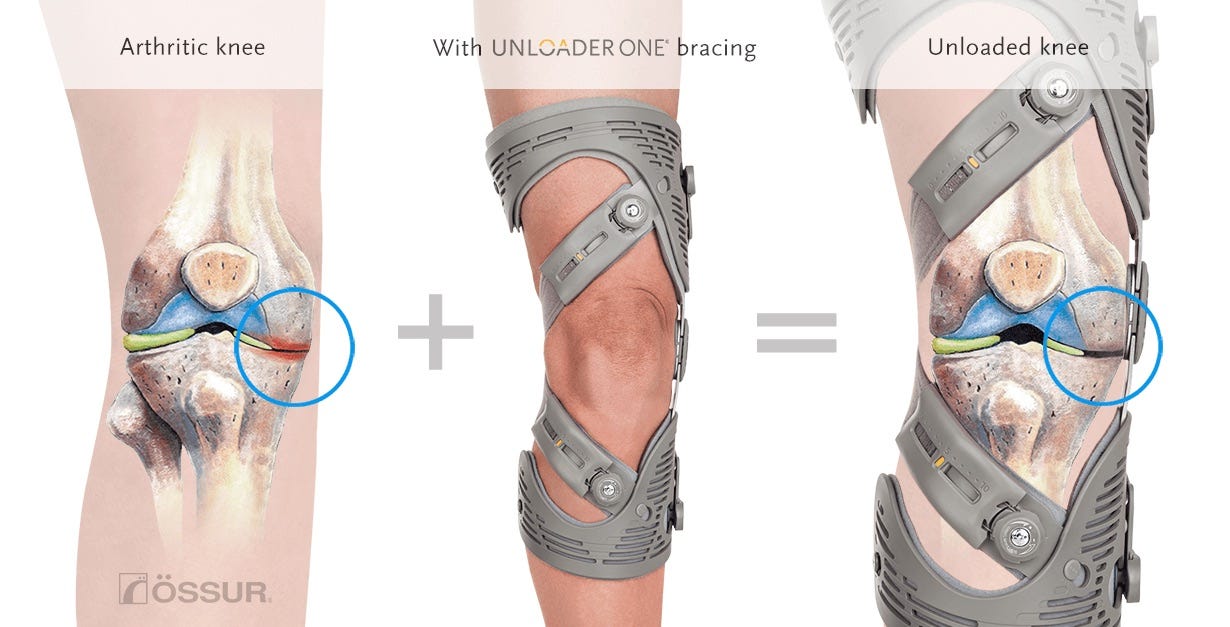

2. Slowing Disease Progression
By reducing the load on the affected compartment, unloader knee braces can help slow the progression of osteoarthritis. This is especially beneficial for individuals who wish to delay or avoid surgery, such as total knee replacement, by managing symptoms conservatively.
3. Improving Mobility and Function
Unloader knee braces not only reduce pain but also enhance knee stability. This can lead to improved mobility, making it easier to perform daily activities like walking, climbing stairs, or standing for extended periods. For active individuals, the braces can help them maintain a higher level of physical activity without exacerbating their symptoms.
If you want to read more about knee braces for osteoarthritis we have another great blog post that we've written specifically on that topic, read more here.
Unloading for Meniscus & Cartilage Injuries
Unloader knee braces can be particularly effective in managing meniscus or cartilage issues by reducing the stress on the affected areas, thereby alleviating pain and potentially slowing the progression of damage. Here’s how unloader braces can help with these specific conditions:
1. Meniscus Injuries
The meniscus is a C-shaped piece of cartilage in the knee that acts as a shock absorber between the thigh bone (femur) and the shin bone (tibia). There are two menisci in each knee: the medial meniscus on the inside and the lateral meniscus on the outside. Meniscus injuries, such as tears, can cause significant pain, swelling, and instability.
Medial Meniscus Injuries
For a medial meniscus injury, a medial unloader knee brace can help by shifting the load from the inner part of the knee (where the injured meniscus is located) to the outer (lateral) part of the knee. This reduction in pressure allows the meniscus to heal more effectively and reduces pain during movement.
Lateral Meniscus Injuries
Similarly, for a lateral meniscus injury, a lateral unloader knee brace shifts the load from the outer part of the knee to the inner (medial) compartment, reducing strain on the lateral meniscus. This unloading can help prevent further damage and promote healing.
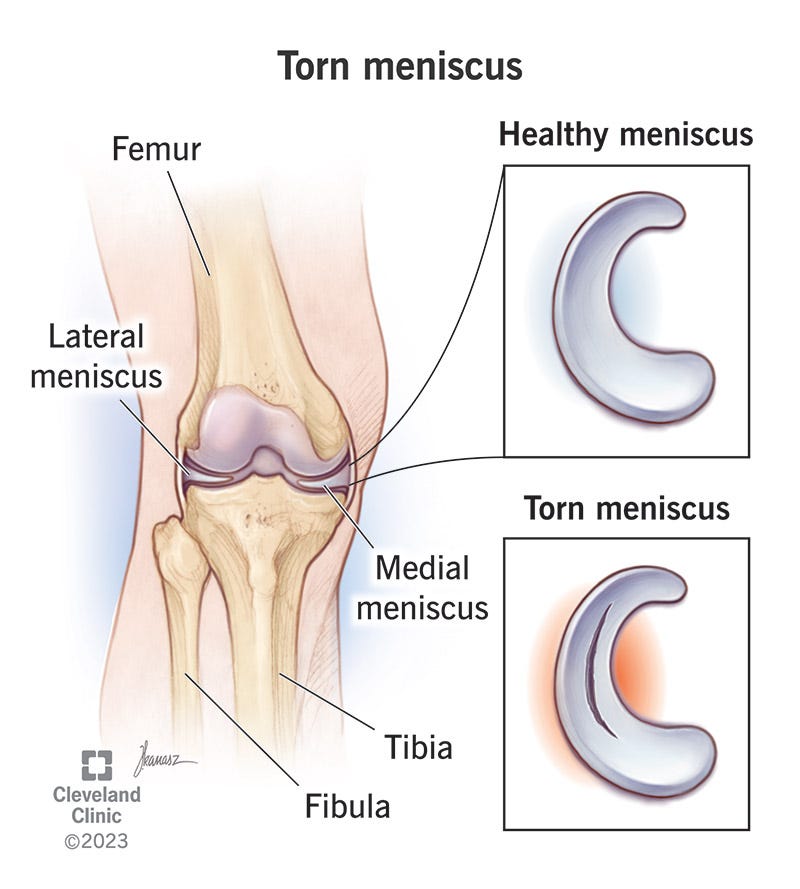

2. Cartilage Damage
Cartilage damage in the knee, such as that caused by osteoarthritis, chondromalacia patellae (softening of the cartilage under the kneecap), or other degenerative conditions, can lead to pain, stiffness, and reduced mobility.
Focal Cartilage Defects
For focal cartilage defects (localized areas of cartilage damage), unloader knee braces can reduce pressure on the damaged area, which is often located in one of the knee compartments (medial, lateral, or patellofemoral). By redistributing the load to healthier cartilage, the brace helps to alleviate pain and slow down further degeneration.
Generalized Cartilage Wear
In cases of generalized cartilage wear, such as widespread osteoarthritis, an unloader knee brace can be used to unload the most affected compartment. For instance, if the medial compartment has more cartilage wear, a medial unloader brace will reduce the load on this area. This approach can help balance the forces across the knee joint, potentially reducing overall pain and improving function.
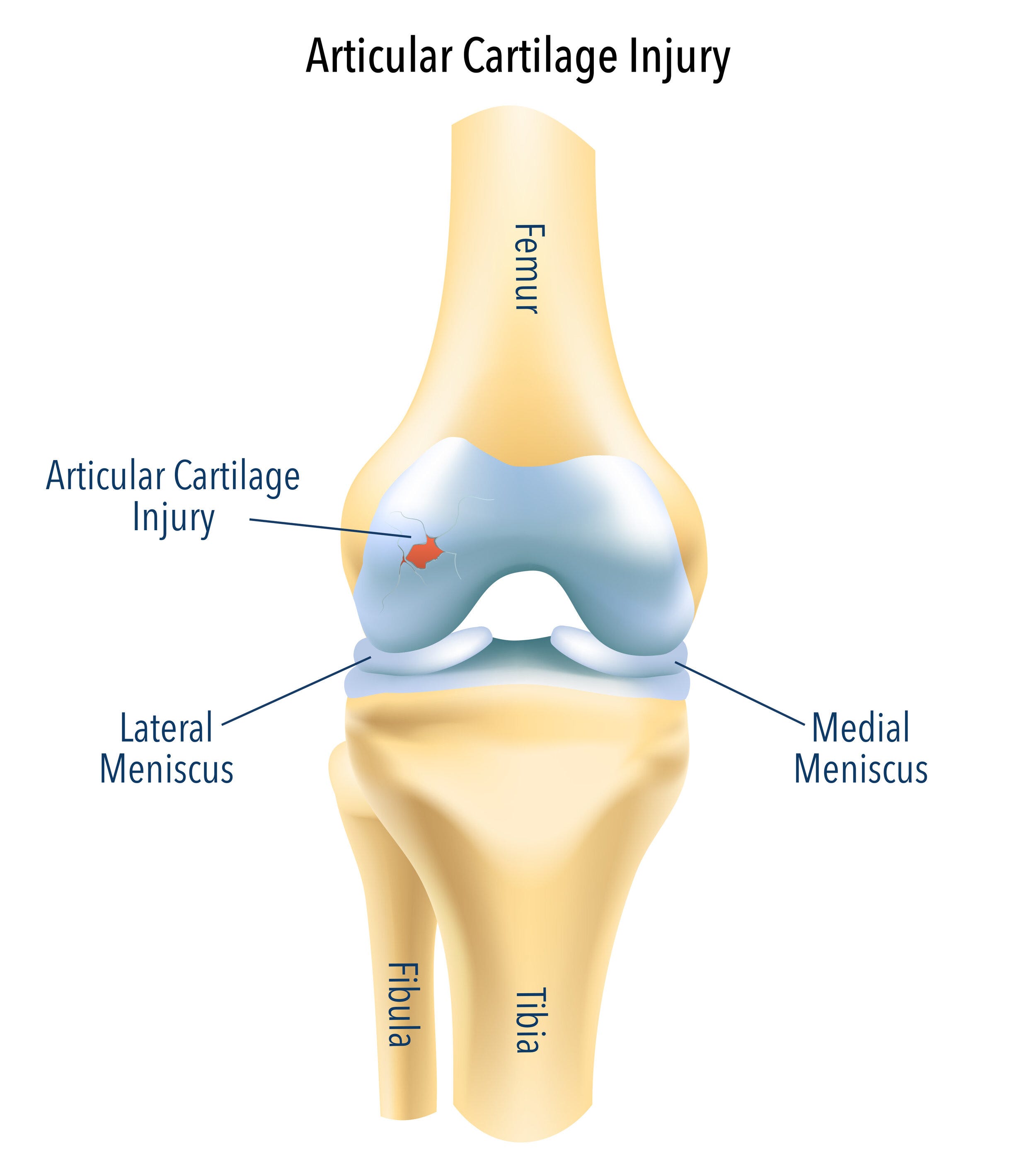

Styles of unloader knee braces
Unloader knee braces can provide targeted relief, helping you to reduce knee pain, regain mobility and improve your quality of life. It's important to consult with a healthcare professional to determine the cause of your knee pain, and which compartment needs unloading based on your specific knee condition.
Are you not sure what unloader knee brace is right for you? Contact our Healthcare Team and we can provide you with fast free advice to help you find the best unloading knee brace for your condition.


